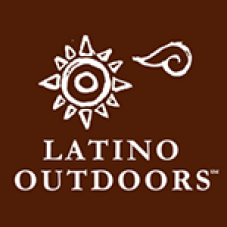Media Contacts
José González, Latino Outdoors
(209) 968-6155
Graciela Cabello, Latino Outdoors
(805) 203-6679
In celebration of the National Parks Centennial, Outdoor Foundation and Kaiser Permanente support organizations connecting people to parks through outdoor recreation.
(LOS ANGELES), June 20 – Latino Outdoors is pleased to announce it was one of eight recipients of a $25,000 grant from Outdoor Foundation and Kaiser Permanente. The grant program awarded funding to deserving non-profits from Northern California that help connect local youth from underserved or urban areas to close-to-home parks.
The partnership between the Outdoor Foundation and Kaiser Permanente will fund eight projects that will engage more than 1,800 young people in recreation at parks. Part of the Outdoor Foundation’s broader “Parks4Kids” initiative, the program was announced at the Partnership for a Healthier America Summit in Washington, DC.
“Using cultural relevancy as a tool to connect communities to the outdoors, and foster the next generation of stewards is a top priority,” said Raquel Rangel, Latino Outdoors Regional Coordinator for the Central Valley. “The community we work with are underserved, first generation Latino families in Modesto, Stockton, and Turlock in California. The program will connect the participants to different nearby parks – local, state, and national. We believe that creating meaningful and memorable experiences, while experiencing different outdoor activities with their families, will empower them to continue accessing such places.”
“America is facing an inactivity crisis, which is contributing to a range of health issues for young people across the country and in Northern California,” said Chris Fanning, the executive director of the Outdoor Foundation. “Thanks to the support and leadership of Kaiser Permanente, we are working with great local groups to get Americans — especially youth — out of the house and into public parks to create healthy, active communities.”
The grant program was created to help combat the inactivity crisis prevalent among youth and young adults in America. The statistics are staggering. According to the Kaiser Family Foundation, the average young person spends eight hours in front of a screen and only eight minutes outside and active.
Latino Outdoors involves multiple outings to parks throughout the year, with the purpose of establishing new and healthy lifestyles and a love for America’s natural treasures. All of the eight non-profits were selected to work with the National Park Service to build lasting relationships between communities and local parks while inspiring a new generation of outdoor enthusiasts that will support and champion park issues.
The non-profits that received funding include:
- Latino Outdoors: Central Valley, CA – Supports ongoing efforts to introduce youth and their families to national parks and other public lands.
- City of Dreams: San Francisco, CA – Exposes youth living in or near public housing projects to new experiences in national, state and municipal parks.
- Earth Team: Berkeley, CA – Trains more than 100 students from Title I minority-enrollment schools to address environmental issues in their communities.
- Groundwork Richmond: Richmond, CA – Creates a youth Green Team to revitalize the community while providing environmental education for participants.
- Nature Bridge: San Francisco, CA – Provides underserved youth with a year of wilderness explorations, service projects, career workshops and more.
- Pogo Park: Richmond, CA – Brings inner-city youth to Yosemite National Park and Muir Woods National Monument to deepen their understanding of nature.
- San Leandro Boys & Girls Club: San Leandro, CA – Introduces urban youth to the outdoors through educational experiences and campouts.
- Waterside Workshops: Berkeley, CA – Provides low-income teens and young adults with daily opportunities for outdoor recreation.
This partnership initiative is a matching fund program where an equal matching share is required from the non-profit and other project partners. The projects will begin this spring and wrap up in December.
###
About the Outdoor Foundation
Charitable arm of Outdoor Industry Association, the Outdoor Foundation is a national not-for-profit organization dedicated to inspiring and growing future generations of outdoor leaders and enthusiasts. Through youth engagement, community grant-making, and groundbreaking research, the Foundation works with young leaders and partners to mobilize a major cultural shift that leads all Americans to the great outdoors. In just five years, the Foundation has invested $4 million into 785 not-for-profit and college programs that have connected 200,000 young people to the outdoors. Importantly, 90¢ of every dollar goes directly into this critical work. Visit us at outdoorfoundation.org and outdoornation.org for more information.
About Kaiser Permanente
Kaiser Permanente is committed to helping shape the future of health care. We are recognized as one of America’s leading health care providers and not-for-profit health plans. Founded in 1945, our mission is to provide high-quality, affordable health care services and to improve the health of our members and the communities we serve. We currently serve more than 10 million members in eight states and the District of Columbia. Care for members and patients is focused on their total health and guided by their personal physicians, specialists and team of caregivers. Our expert and caring medical teams are empowered and supported by industry-leading technology advances and tools for health promotion, disease prevention, state-of-the-art care delivery and world-class chronic disease management.
About Latino Outdoors
With roots in the past, a presence in the present and vision for the future, Latino Outdoors is a network of leaders committed to engaging Latinos/as in the outdoors, connecting familias and youth with nature, and empowering our community of storytellers to explore and share their personal experiences. Our growing online platform allows participants to creatively document their cultural connections to conservation, the environment, and the Great American Outdoors with the world.

 Durante un típico domingo costero, de sol y neblina, un grupo de unos 30 adultos y niños latinos comienzan a descender las faldas de la Montaña Tamalpais, en el Parque Nacional Golden Gate.
Durante un típico domingo costero, de sol y neblina, un grupo de unos 30 adultos y niños latinos comienzan a descender las faldas de la Montaña Tamalpais, en el Parque Nacional Golden Gate.